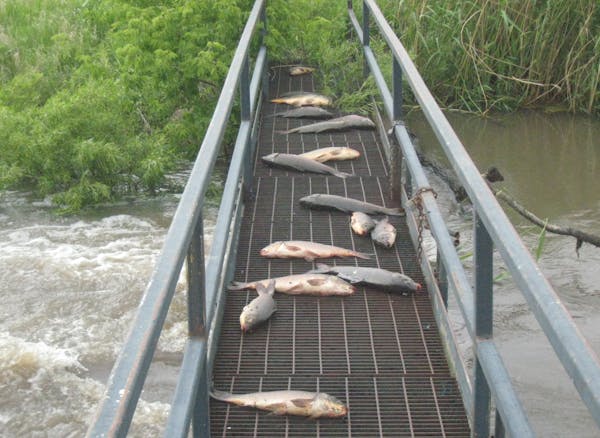Just about every crop in Minnesota is a week or two behind schedule this year because of the late spring. That includes Minnesota's official state grain: wild rice.
Wild rice harvesting opened last weekend, but most rice stands are not ripe yet. The Minnesota Department of Natural Resources estimates that peak harvesting dates will be in early to mid-September as long as the weather remains mild.
DNR officials said people who harvest rice may want to scout areas ahead of time because some stands that were abundant last year may not have any harvestable rice in 2014.
"Early and sustained high water levels this year have hurt some rice beds," said David Kanz, DNR assistant wildlife manager in Aitkin. "As water levels continue to come down, we'll have to watch how the rice responds and see if there is enough growing season left for it to recover."
More than 1,200 lakes and rivers in 54 counties contain wild rice, with the largest concentrations in north-central Minnesota's Aitkin, Cass, Crow Wing, Itasca and St. Louis counties.
Harvesters on public waters need an annual $25 license to collect the rice, and the season is open from Aug. 15 to Sept. 30. Last year, 1,506 people obtained seasonal licenses, and about 350 received one-day resident or nonresident licenses. That's down from an average of 2,000 seasonal licenses per year in the 1990s and more than 10,000 per year in the 1960s, when licenses first began to be required.
Getting the rice requires a nonmotorized canoe, no more than 18 feet long. Gatherers must use push poles or paddles for power. Wild rice is collected by using two sticks, or flails, to knock mature seeds into the canoe. It is illegal to harvest unripe rice.
Wild rice is actually the seed of an aquatic grass that is the only cereal grain native to North America. It reproduces each year from seed dropped the previous fall, and typically grows in water 1 to 3 feet deep.
There is no limit on the amount of rice that can be harvested by those with licenses, but wild rice may not be taken from any waters within the original boundaries of several Indian reservations in Minnesota except by tribal members or other reservation residents.
Wild rice is a traditional food source and a revered part of Native American culture, as well as a critical food staple for migrating waterfowl each fall. Scientists have been studying whether wastewater from taconite mines and other sources may affect its growth.
Cultivated plots also late
In addition to natural stands of wild rice on public waters, about 30 growers cultivate wild rice on private lands.
"We're running a couple weeks behind this year, too," said Beth Nelson, executive director for the Minnesota Cultivated Wild Rice Council. Usually harvest is complete by Labor Day, she said, but this year it will likely be mid-September.
"We just take land and we dike it and ditch it and flood it, and once the rice is at the proper growing stage, we drain those paddies and harvest with modified combines," she said.
Minnesota and California are the only states that cultivate wild rice as a crop, Nelson said, and last year Minnesota produced about 9 million pounds, slightly less than California.
"I'm told that this year looks like a relatively good crop but not a bumper crop," she said.
Wild rice is rich in protein, and because at harvest it contains about 40 percent moisture, Nelson said it needs to be parched or parboiled as part of a multistage finishing process before it can be stored and marketed.
Tom Meersman • 612-673-7388
US probes whether Tesla Autopilot recall did enough to make sure drivers pay attention
Fed's preferred inflation gauge shows price pressures stayed elevated last month

